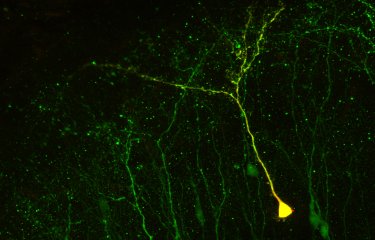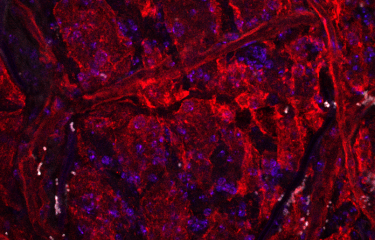A team from the Institut Pasteur associated with the CNRS has just identified a key molecule in the brain capable of attracting new neurons and guiding them towards areas that they could repair. This discovery, previewed on the site Nature Neuroscience (http://www.nature.com/neuro/), brings to the fore a molecule essential for the organization of neuronal circuits in adults. This introduces remarkable prospects for developing therapies for brain repair.
Press release
Paris, march 15, 2004
Until quite recently, neurobiologists believed that the brain and the spinal cord could not repair themselves. The discovery of stem cells within the adult brain itself has shattered this belief. Pierre-Marie Lledo’s team at the Institut Pasteur ("Perception and Memory" Unit, CNRS URA 2182) demonstrated that the adult brain manufactured true neurons capable of establishing new connections (Nat. Neurosci. 2003). This ability allows the adult brain to adapt itself to the changes occurring throughout life. It also offers the possibility for the brain to repair itself in case of injury or disease.
But how could neuronal precursors be led to the areas to be repaired? The researchers of Lledo’s team, in collaboration with Professor Melitta Schachner’s team from the University of Hamburg in Germany, have monitored these events in the olfactory bulb, the first cerebral relay of the response to smells, and one of the rare cerebral tissues where the recruitment of new neurons can be observed in adults. They showed that the presence of tenascin, a molecule secreted by the olfactory bulb, was sufficient to attract immature neurons to this region. There, the young cells became differentiated into true neurons. By having this molecule produced by another region of the brain, the researchers observed that the juvenile neurons were diverted from their location to join this target region. This molecule thus makes it possible to target the destination of neoneurons and could be a promising tool in cell therapy of the brain.
"This research enriches our knowledge in the area of cerebral mechanisms for organizing neural networks. It sheds new light on the repair functions of the central nervous system and could contribute to working out new treatment strategies aiming to divert newly formed neurons from their germ layer to regions to be repaired", Lledo commented.
Sources
" Tenascine-R mediates activity dependent recruitment of neuroblasts in the adult mouse forebrain ".
Armen Saghatelyan (1), Antoine de Chevigny (1), Melitta Schachner (2) and Pierre-Marie Lledo (1)
(1) Olfactive Perception and Memory Applicant Unit, CNRS URA 2182, Institut Pasteur,
25 rue du Dr. Roux, 75015 Paris Cedex (FRANCE), (2) Zentrum für Molekulare Neurobiologie, Universität Hamburg, Martinistrasse 52, D-20246 Hamburg (GERMANY)
" Becoming a new neuron in the adult olfactory bulb ".
Alan Carleton (1), Leopoldo T. Petreanu (2), Rusty Lansford (3), Arturo Alvarez-Buylla (4) & Pierre-Marie Lledo (1)
(1) Olfactive Perception and Memory Applicant Unit, CNRS UMR 2182, Institut Pasteur, 25 Rue du Dr Roux, 75015 Paris (FRANCE) (2) The Rockefeller University, 1230 York Avenue, New York, New York 10021, USA (3) Division of Biology, Biological Imaging Center, Beckman Institute, California Institute of Technology, Pasadena, California 91125, USA (4). Neurosurgery Research, UCSF, San Francisco, California 94134, USA
Contact press
Institut Pasteur - Press Office
Nadine Peyrolo
01 45 68 81 47 - npeyrolo@pasteur.fr
Bruno Baron
01 45 68 91 30 - bbaron@pasteur.fr
CNRS - Department of Life Sciences
Françoise Tristani
01 44 96 40 26 - francoise.tristani@cnrs-dir.fr
CNRS - Presse Office
Isabelle Tratner
01 44 96 49 88 - isabelle.tratner@cnrs-dir.fr




